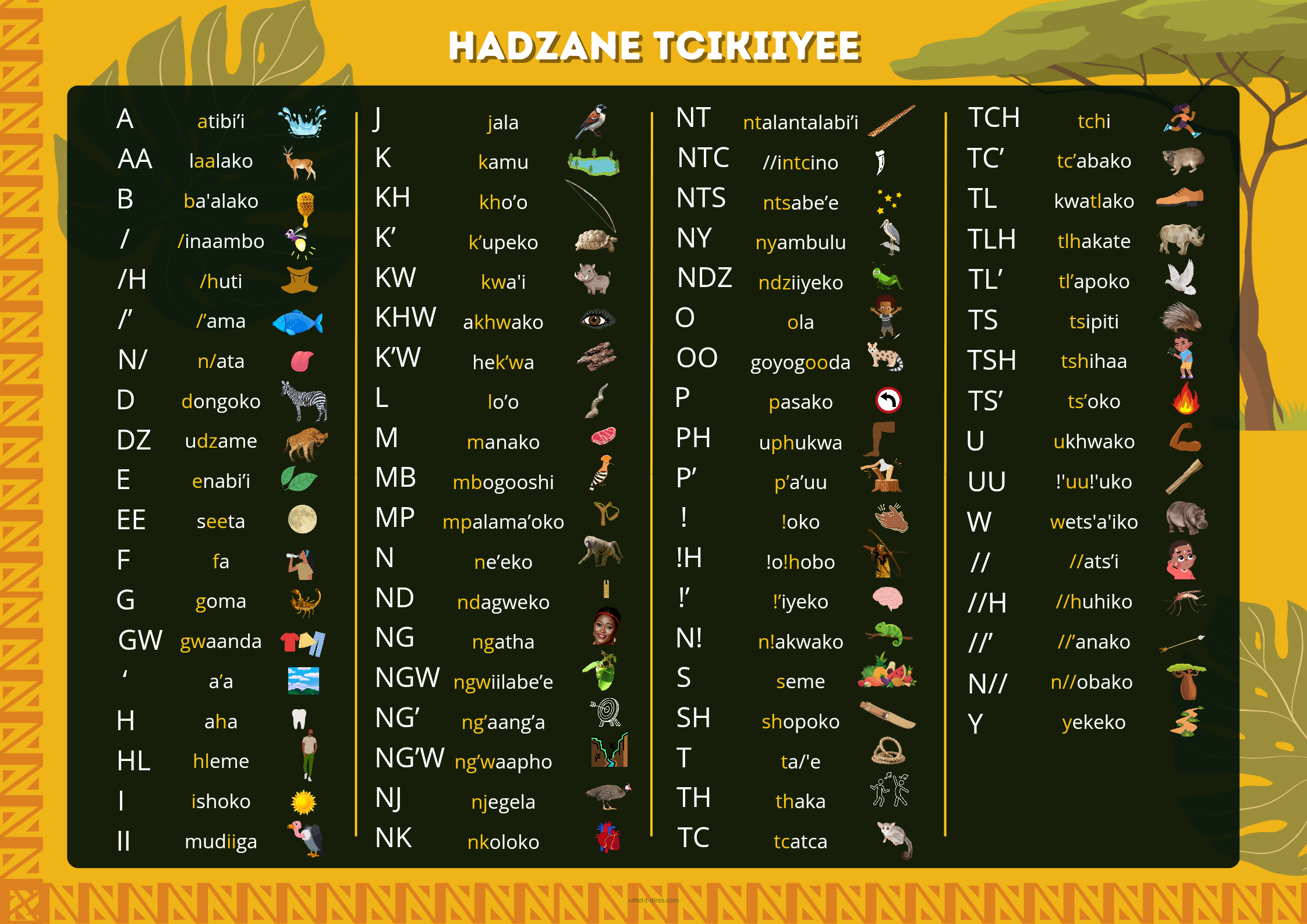Hadza Alphabet Chart Completed to Support Language Revitalization

A new Hadza alphabet chart, created in partnership with Hadza community members, will be delivered to the community this August to support teaching, documentation, and language preservation.
The Hadza language, an endangered language isolate spoken by roughly 1,500 people around Lake Eyasi in north-central Tanzania, has seen declining intergenerational transmission amid social and economic changes. In May 2024, nine representatives from major Hadza communities met for a Hadza Community Orthography Workshop and, together with Department of Linguistics faculty member Dr. Jeremy Coburn, agreed on a community orthography intended for literary materials and broad use in communications, publications, and media about the language.
Following community acceptance at larger meetings across the Hadza homeland, Dr. Coburn teamed with Andrew Harvey (University of Bayreuth) and graphic designer Rahel Dires to produce an illustrated Hadza alphabet chart. The chart displays the language’s 73 distinct sounds, including 12 click consonants, paired with example words and illustrations to aid learning and recognition.
Although literacy rates are currently low among the Hadza, community leaders have asked for the orthography to be taught, especially to children, and displayed in schools, cultural centers, and tourism offices. The chart’s public release at a community-wide meeting in August will make a practical tool available for classroom instruction, cultural programming, and local publications, and will support ongoing documentation and revitalization efforts.
